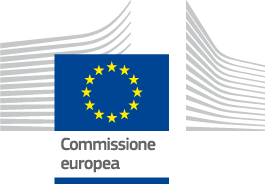

Good Practice Project
The Lake Vãttern Co-management Group, supported by the FLAG, is helping local stakeholders to reach a consensus on the sustainable management of fish resources of the second largest lake in Sweden.
Lake Vãttern, the second largest lake in Sweden and the fifth in Europe, is an important area for both commercial and recreational fisheries, which compete for the same fish resource (the most important species being Arctic char and crayfish). A co-management group was set up in 2005 to create a platform for dialogue for all categories of stakeholders, to ensure the long-term, sustainable management of Lake Vãttern fisheries and to make the management process more flexible and efficient.
Managed by the Lake Vãttern Society for Water Conservation, the co-management group plays an advisory role to the national authority responsible for fisheries management. The group brings together representatives of commercial and subsistence fishermen, anglers, water owners, researchers, NGOs, as well as the relevant local, regional and national authorities. It enables stakeholders with different interests to discuss how fish conservation in the lake should be conducted, what can be done to improve the situation as regards declining fish stocks, how the limited fish resources should be allocated among different fishing categories, and issues fisheries control measures and regulations. It meets three to four times a year and, as a rule, each meeting is hosted by a different municipality around the Lake and involves a field visit. It has several working groups focusing on specific topics, e.g. crayfish, rules and regulation, catch control etc. The decisions of the group are generally taken by consensus.
When it was first established (as one of five pilot groups in Sweden), the group received initial support from the national authorities, but since the start of Axis 4, the activities of the co-management group have been co-financed by the Lake Vãttern FLAG, which pays the salary of a fisheries expert, who plays the role of part-time coordinator, as well as travel costs and compensation for meeting time of the members of the co-management group. The FLAG is also helping the group to make links with some key actors, e.g. municipalities around the lake. The cooperation between the co-management group and the FLAG is helping local actors, including the fishing sector, to have more influence on fisheries management.
The group has developed a number of recommendations and legislative proposals which were taken into account by the national authorities, for example the setting up of three protected areas in Lake Vãttern and the introduction of escape openings in crayfish traps. A collaborative management plan has been developed, with guidelines and goals along with measures to facilitate sustainable fishing in Lake Vãttern. Although the management plan is not legally binding, the stakeholders have reached a voluntary agreement which allocates the catch of the eight most important species of fish between different categories of stakeholders. The co-management group has also contributed to a more open and transparent policy making, with better understanding between stakeholders and enhanced compliance with the regulations, as well as a more flexible management process; the process is also faster because decisions are better prepared and the national authorities are involved from the start.
This example is particularly relevant for FLAGs which face user conflicts for fish resources in their areas. Due to their partnership character FLAGs are able to bring different stakeholders around the table and facilitate a consensus around common goals. They can also help to make sure the voice of the fisheries sector is heard and taken into account in policy making, although the degree to which the recommendations of such co-management bodies are taken up will depend on the legislative system and vary between Member States.
| Total project cost | €100 000 |
|---|---|
| FLAG grant |
€100 000
|
| Timeframe of implementation | From Aug 2018 |
|---|---|
| Sea Basins |
|
| Type of area |
|
| Theme |